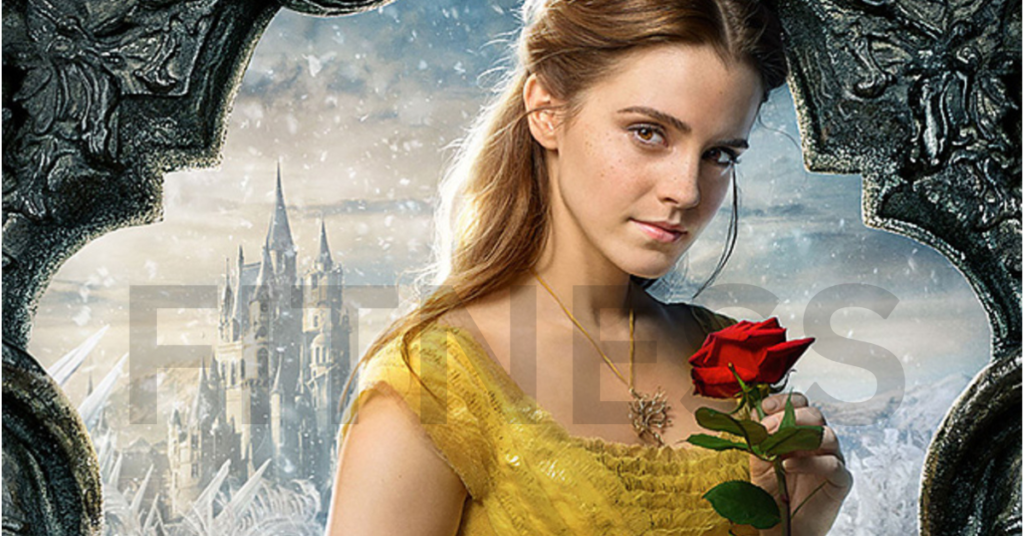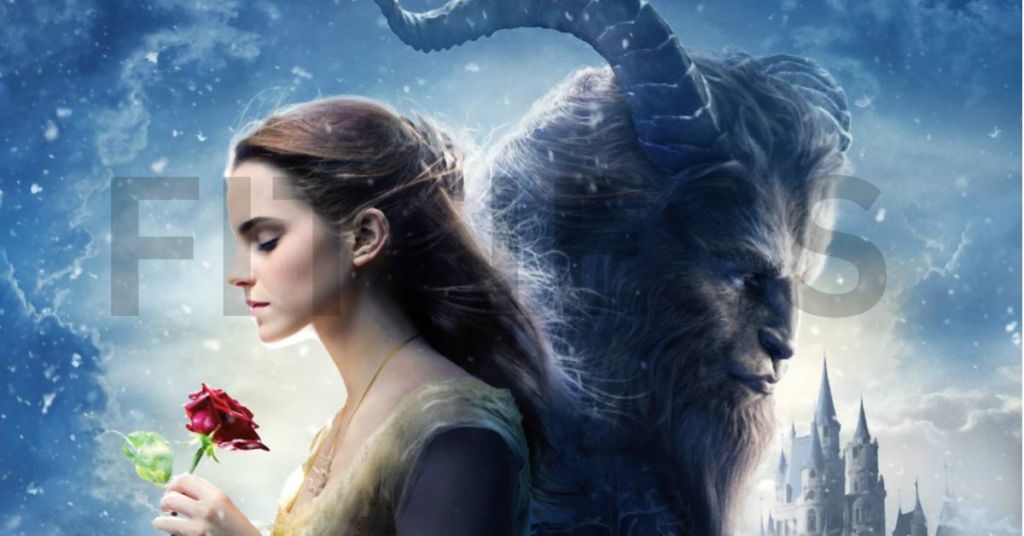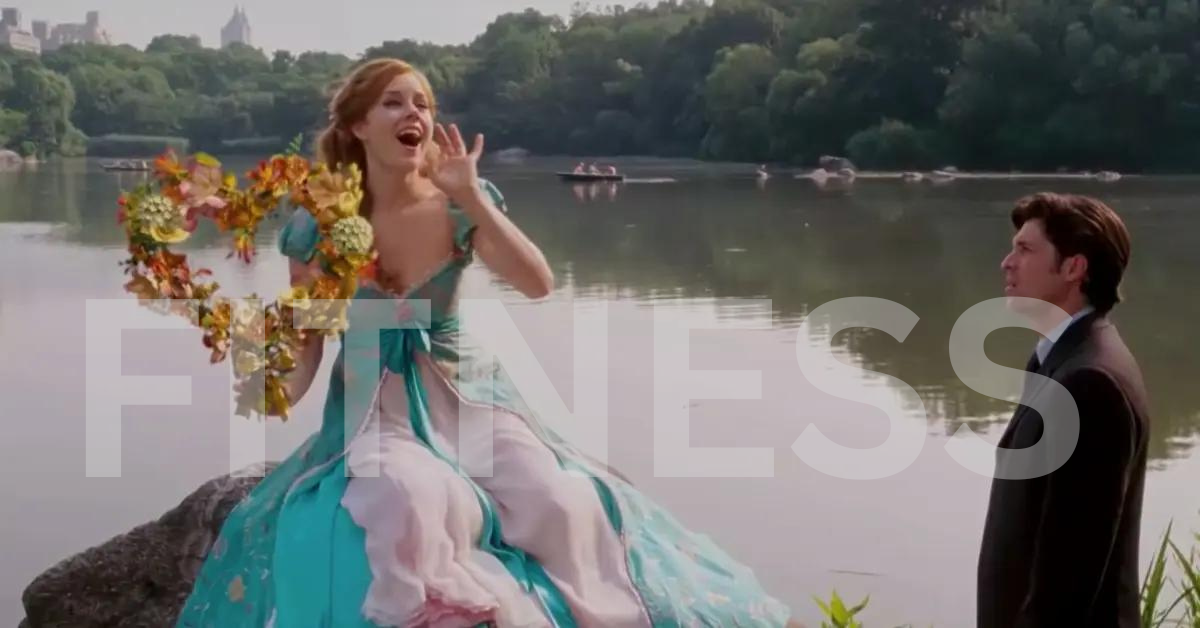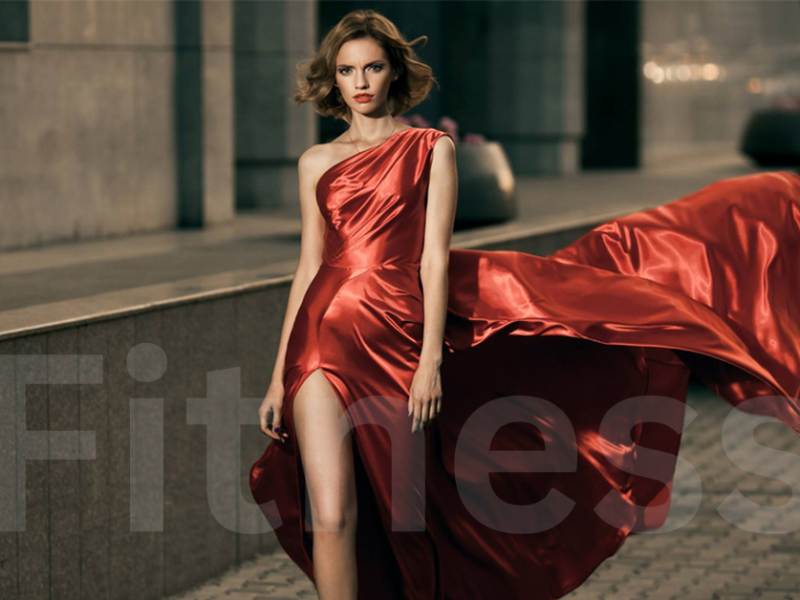The Enchantment of the Beauty and the Beast Rose, I hope you
enjoy your stay in “The Enchantment of the Beauty and the Beast Rose.” This article takes you on a trip to find out more about the magical rose from the classic story
Beauty and the Beast. This rose is one of literature’s most famous images.
The story of Beauty and the Beast comes from many different types of mythology. It has become associated with love, suffering, and change. The story so which became famous thanks to Jeanne-Marie Leporine de Beaumont, is about how
the beautiful Belle and the cursed Beast fall in love so which doesn’t make sense. We see the power of inner beauty and the victory of love over looks through their journey.
At the heart of this beautiful story is the image of
the bewitch rose so a delicate flower that is trapped by a fearsome spell. The Beast has less time to break the curse as each flower falls, which gives
the story a sense of urgency and sadness. Because it is fragile and only looks pretty for a short time, the rose is a powerful symbol for how time passes and how short life is.
In this study, we will look into the many symbols
that are woven into the story of Beauty and the Beast. We will look at the greater meanings of the magical rose and what role it plays in the story. From its roots in legend to its long-lasting presence in literature, film, and art, the magical rose continues to
attract people of all ages, leaving a lasting mark on culture.
Background of Beauty and the Beast
The story of Beauty and the Beast has been enchanting people for hundreds of years. Its roots can be found in different European folktales. But the French fairy tale by Gabrielle-Suzanne Barbet de Villeneuve in the 18th century is one of
the best known versions of the story. It was later translate and made famous by Jeanne-Marie Leporine de Beaumont.
The story is about a girl name Belle who gives up her
freedom to save her father from a scary beast that lives in a house full of magic. Over time, Belle learns to see past the beast’s scary surface to find its true beauty.
There are many themes in this story, such as love, forgiveness, and inner beauty. Its timeless lesson of acceptance and change draws readers in. Since then so Beauty and the Beast has become a classic that has been adapt many
times in books, plays, movies, and other media.
The famous “enchanted rose,” which represents
the Beast’s curse and the looming danger of endless punishment so is a big part of why the story is still popular. The Beast’s chance of breaking the spell and becoming human again slowly fades, just like the leaves of the rose. Because the rose is so delicately beautiful and will soon die, it adds depth and sadness to the story, making the emotional stakes higher for both the characters and the readers.
Significance of the Enchanted Rose
It is important to remember that the magical rose in “Beauty and the Beast” represents time, love, and healing. Not only does it play a big part in the story so
but it also has deep symbolic meanings that connect with people on a deeper level.
The magical rose first and foremost stands for the Beast’s humanity and the chance for forgiveness. The prince was curse and turned into a monster. The charmed rose is a physical memory of his curse and how important it is to break it right away. As each flower falls, the Beast’s chances of breaking the spell get smaller. This builds a sense of approaching doom that moves the story along.
Additionally, the magical rose represents how time passes and how short life is. The years go by for the Beast so who is stuck in his curse form so just like the rose slowly dies. This part of time makes the story more emotional by showing how quickly
beauty fades and how important it is to enjoy the moment.
Besides that, the magical rose is a test of love and sacrifice for both Belle and the Beast. Belle’s feelings for the Beast grow stronger as she spends more time in the house. Her decision to stay with him even though the curse is coming shows how love can change things. In the same way, the Beast’s choice to let Belle go, even though it meant
she would be curse forever so shows how selfless he is and how much he can grow.
The Symbolism of the Rose
Within “Beauty and the Beast,” the rose is a sign
that has many meanings so which gives the story more depth and complexity. Beautiful things are what the rose is all about so but it’s more than just how it looks.
Love is one of the main ideas that come to mind when you think of the rose. In Western society, the rose has long been a sign of love and desire between two people. In “Beauty and the Beast,” the rose is a physical symbol of Belle and the Beast’s love so which goes beyond how they look and what society expects of them. Even though the Beast looks scary so Belle looks past his monster’s appearance and finds beauty inside him. They form a deep bond that goes against traditional ideas of love.
Symbolism of the Rose
In addition, the rose stands for change and growth. The characters in “Beauty and the Beast” change a lot over the course of the story so
just like a rosebud slowly opens up into a full bloom. The Beast learns to let go of his anger and bitterness and embrace weakness and empathy. Belle grows from a shy country girl into a brave and caring young woman. The rose’s slow opening and ultimate closing is like this process of human growth and development. It shows how love and self-discovery can change things.
Additionally, the rose is a sign of how time goes by and that death is inevitable. As each flower falls, the Beast has less time to break the curse. This shows how quickly life can change and how important it is to seize the moment. This idea of time passing quickly adds a sense of urgency and sadness to the story, making the point
that life is short and we should treasure every moment.
Beauty and Fragility
In “Beauty and the Beast,” the magical rose represents both beauty and frailty. By putting these two ideas next to each other so it shows how they are connect in deeper ways.
To begin, the rose is a symbol of the most beautiful kind of beauty. Its delicate flowers, bright colors, and enticing scent make everyone who sees it feel amazed and mesmerized. The rose is more beautiful than it looks; it represents inner beauty so grace and purity. Belle’s character shows this idea by showing how beautiful she is not because
of how she looks but because of how kind so compassionate and strong she is.
But along with its beauty, the rose also represents weakness and frailty. Like rose petals that are easily bent and bruise so the characters in
the story are also easily hurt by the hard facts of life. Because roses are so fragile, they serve as a powerful reflection of how short life is and
how beautiful things are. It emphasizes how short-lived youth so
energy and love are so telling the characters (and, by extension, the audience) to enjoy every moment and find beauty in the fact that things change.
The contrast between the beautiful and fragile parts of the
magical rose also adds to the emotional power of the story. Just like the rose slowly dies so does the Beast’s hope of breaking the curse and being forgiven. The story feels more urgent and poignant because of how fragile the rose is. This raises the stakes for the characters and makes the audience feel more deeply.
Time and Transformation
Time and change are big themes in “Beauty and the Beast,” and
the magical rose is a physical representation of both. The time is a major theme that runs through the story, affecting what the people do and how their lives turn out.
The magical rose is a visual picture of how quickly
time goes by and how bad things are for the Beast. Each flower that falls brings him closer to staying in his cursed form forever. This shows how short time is and how important it is to take advantage of the chance to change. The idea of time adds drama and excitement to the story, making Belle and the Beast feel like they need to break the curse right away before it’s too late.
Another important theme in the story is change so which is closely connect to the passage of time. Just as the rose withers and dies, so do the people, changing deeply on the inside and the outside. The Beast’s change from a scary monster to a beautiful
prince is a reflection of his inner journey to find himself and be forgiven. The same way that Belle’s journey from an innocent girl to a brave and caring woman mirrors her own growth and change.
Time and change are also important themes that go
beyond the individual characters and include bigger ideas of change and renewal. The magical rose begins a change by pushing the characters to face their darkest fears, get past their limits, and accept who they really are. They learn important lessons about love, forgiveness, and the power of healing on their trip, which makes them stronger and more durable in the end.

The Enchantment of the Rose
The rose’s magic in “Beauty and the Beast” is a big part of the story’s plot and themes. It sets off the events of the story and gives it a mysterious so magical air.
There is a strong curse on the prince and his house that
was put there by a witch dress up as someone else. The prince is turn into a scary animal as punishment for being cocky and mean, and his slaves are turned into household items. The curse is tied to a special rose so which is both a reminder of how human the prince is and a measure for how long the curse will last.
There is some doubt about what kind of magic is surrounding the rose, which makes the story more interesting. Even though it’s not made clear how the curse works so the characters feel its effects very strongly or which moves the story forward and raises
the stakes of their quest for forgiveness.
The Rose
Both the Beast and Belle have to show what kind of people they are by how they handle the rose’s magic. As for the Beast, the rose is his one and only chance to be forgiven,
to break the curse and become human again. As the flowers fall off, he has to face his flaws and learn important lessons about love,
forgiveness, and not caring about himself.
The magic of the rose for Belle is a process of finding out more about herself and growing as a person. She is drawn to the mysterious castle and the mysterious person who lives there. The magical rose presents her with challenges and problems
and she must overcome them in order to find the strength and courage to face the Beast and break the curse.
The Curse and Its Conditions
Beauty and the Beast is based around a powerful
curse that covers the Beast, his house, and everyone who lives there. An evil witch dressed as an old poor woman put this curse on the prince. It is the main conflict of the story and determines what the characters do and how their lives turn out.
The curse has many different effects, but the most noticeable
ones are changing the prince into a scary animal and his staff into things that are used around the house. However, the magical rose is the most visible sign of the curse. It serves as both a timer and a reminder of how human the Beast is.
The conditions of the curse are twofold, and the magical rose is the key to both making it happen and possibly undoing it. First, the curse is tied to the growth of the magical rose. The petals that are fading represent the passing of time and the Beast’s decreasing chance to be forgiven. With each flower that falls, the Beast’s humanity fades even more, making his search for rescue seem more urgent.
Second, the Beast must follow certain rules that are set by the curse in order to be free. These conditions aren’t said outright in the story so but they’re clear from what the Beast does and how he acts around Belle. One of the most important parts of the curse is that the Beast has to learn to love and be love before the last leaf falls from the rose.
Magical Properties of the Rose
The enchanted rose in Beauty and the Beast has many
magical qualities that make it important to the story and appealing to both the characters and the viewer. These magical traits add to the story’s sense of wonder and mystery by giving it more levels of meaning and interest.
The most important magical property of the rose that was
cursed is that it can keep the Beast and his house under the curse for a certain amount of time. As each rose bloom falls, the Beast’s chance to be forgiven gets smaller. This builds drama and a sense of urgency that moves the story forward. This magical quality of the rose gives it a sense of dread and importance, which emphasizes its center role in the story.
In addition, the magical rose has the power to charm and fascinate anyone who sees it. People and characters alike are enchant by its delicate beauty and mysterious aura, which creates a mood of interest and intrigue that runs through the story. The rose’s magical appeal drives the characters to face their fears, get past problems, and eventually find forgiveness.
The magical rose also has the power to inspire and change the people who come into contact with it. The Beast’s journey of self-discovery and personal growth
is sparked by the rose, which forces him to face his flaws and learn important lessons about love so kindness, and forgiveness. Belle sees the rose as a sign of hope and opportunity, too. It encourages her to look past how things look and see the beauty inside.
Interpretations and Analysis
Beauty and the Beast has been interpret and analyzed in many
different ways, each giving a different view of the story’s themes,
characters, and symbols. Scholars and readers have looked at the story’s complexities and implications in many ways, from psychology to feminist, and found levels of meaning that speak to people of all countries and generations.
A common way to understand “Beauty and the Beast” is through
its ideas of love, forgiveness, and how kindness can change things. The story is seen by some as a metaphor for the human situation because it shows how we go from darkness to light,
from hopelessness to optimism. Through Belle and the Beast’s characters, readers can think about how complicated love and forgiveness can be, as well as
how people can grow and be forgiven even in the worst situations.
Another way to look at “Beauty and the Beast” is to look at how it shows relationships and gender roles. Some reviewers have pointed out how
the story goes against traditional gender roles,
especially in Belle’s character, who goes against what society expects of her and asserts her freedom and choice. Feminist experts have looked at
the relationship between Belle and the Beast through the lens of themes of freedom, self-discovery, and mutual respect.
“Beauty and the Beast” has also been seen as a story
about how important it is to be beautiful on the inside, not just on the outside. The Beast serves as a reminder to readers that real beauty is not in how
someone looks, but in how kind, compassionate and honest they are. In this view, the timeless lesson of accepting yourself and the importance of looking deeper than quick opinions is emphasized.

Psychological Perspectives
Beauty and the Beast can be interpreted in many
psychological ways, and it’s a great story for studying identity, relationships, and personal growth. Different psychologists and historians have looked at the story using different theoretical frameworks, such as Freudian studies and Jungian images. This has helped us understand the inner psychological processes at play in the story.
From a psychology point of view, “Beauty and the Beast” is about
the ideas of change and becoming your own person. Scholars use Jungian psychology to say that the story follows the pattern of the hero’s journey,
in which the main character learns about himself or herself and fits in with the group. The Beast’s change from a monster to a noble prince represents
the journey of individuation, during which a person faces and combines their different parts of themselves in order to become whole and happy.
The Psychological Perspectives
Attachment theory, which looks at how relationships
and mental bonds work between people, has also been used to study Belle and the Beast’s relationship. Scholars have pointed out the similarities between Belle and the Beast’s relationship and how people connect to each other in real life,
focusing on themes of trust, closeness, and weakness. From mistrust and fear at first to mutual respect and love, their relationship has gone
through stages that are similar to how attachments form and grow.
“Beauty and the Beast” has also been looked at through
the view of psychoanalysis, especially in terms of how it shows the unconscious mind and suppressed urges. Some people see the Beast’s inner turmoil and battle with his own identity and wants as a reflection
of Freudian ideas like the id, ego, and superego. You can see his ultimate change and salvation as a settlement of these inner conflicts,
showing that conscious knowledge and self-control win over unconscious urges.
Literary Critiques
A lot of literary reviewers and scholars have looked at Beauty
and the Beast from different points of view and talked about its themes, images, and formal elements. From structure analyses to comparison studies, these criticisms show how well the story is written and why it’s still popular.
The use of metaphor and symbols in “Beauty and the Beast” is something that literary critics often talk about. Critics have looked into the deeper meanings of
the magical rose, the characters’ journeys of change and what the Beast’s curse means symbolically. Scholars find levels of meaning that help
them understand the story’s wide range of themes and global appeal by closely examining the text.
“Beauty and the Beast” has also been looked at in
terms of its story framework and how it tells its story. Critics have looked at how frame techniques, narrative style, and pace are used to
show the story’s ideas and build the characters. The balance between action and reflection, as well as the relationship between the main
plot and the side plots, have been studied to see how well they keep readers interested and get across the story’s main messages.
Also, literary reviews of “Beauty and the Beast” often look
at the story’s historical and cultural background to see how
it reflects the values, beliefs, and worries of the time it was written. Scholars study how the story has changed over time in different literary styles and countries,
noticing changes in the plot, the characters, and the main idea. Comparative studies bring out the common themes and patterns that cut across cultures,
showing how the story is still relevant to readers of all ages.
Cultural Impact and Adaptations
Beauty and the Beast has left an enduring mark on
popular culture, inspiring many versions, retellings, and new readings in a wide range of media and settings. The story has been told in books, movies,
plays, and visual arts all over the world, and it continues to touch new generations.
The 1991 Disney cartoon movie “Beauty and the Beast” is one of the most famous versions of the story. This version of the story brought it to a new group of
viewers and solidified its place as a Disney favorite. With its memorable characters, beautiful animation, and charming music so the movie won over
millions of hearts and became a cultural hit that led to sequels, spin-offs, and a live-action remake in 2017.
In addition, Beauty and the Beast has been turned into many stage shows, from Broadway plays to smaller theater productions. There are new ways to look at the story in these versions, which often use creative staging, dancing, and design to bring it to life on stage. People of all ages love going to the theater because the story’s timeless themes of love, forgiveness, and self-discovery work well in that format.
Also, Beauty and the Beast has been the basis for many retellings and adaptations in literature, ranging from accurate reimagining’s to more current takes on the story. Different writers and artists have changed the story in their own ways, looking at the characters and themes from different cultural and historical points of view. These new versions of the classic story give readers new ways to look at it, showing how universally appealing and important it is.
Retellings in Literature and Film
Literature and movies have told and remade Beauty and the Beast many times, with each version giving the classic story a new look. From accurate retellings to creative reinterpretations, these versions look at the original story’s themes, characters, and ideas in fresh and new ways, keeping people interested and giving the story new life.
Literature
The story of “Beauty and the Beast” has been retold many times in different types of writing. Different authors have told the story in different ways and used different cultural settings to explore its themes of love, forgiveness, and self-discovery. Here are some well-known literature retellings:
“Beauty” by Robin McKinley: “Beauty” by Robin McKinley is a rich and engaging version of the classic story. It focuses on the character of Beauty and her journey of self-discovery as she lives in the Beast’s magical house.
This is “Beastly” by Alex Finn: This book for teens and young adults takes “Beauty and the Beast” and sets it in modern-day New York City. The story is about a spoiled rich kid who is turned into a beast and has to learn how to find true love to break the curse.
“East” by Edith Patton: “East” by Edith Patton is a unique version of “Beauty and the Beast” that takes place in a magical world of ice and snow. It is based on Scandinavian myth. Our main character is a young girl named Rose. She sets out to save her sister from a strange and dangerous creature.
Film
An cartoon and live-action version of “Beauty and the Beast” has been made many times, and each one has its own take on the famous story. From Disney’s cartoon classic to new versions of the stories, these treatments have wowed viewers all over the world with their beautiful graphics, memorable characters, and classic themes. Some well-known movie versions are:
The 1991 Disney movie “Beauty and the Beast”: This Disney cartoon musical movie is still one of their most beloved classics. Its memorable characters, catchy songs, and beautiful animation continue to charm audiences. The movie got good reviews and won a lot of awards, including the Academy Award for Best Original Song and Best Original Score.
“Beauty and the Beast” (2017): Disney’s live-action version of the famous story “Beauty and the Beast” came out in 2017. Emma Watson plays Belle and Dan Stevens plays the Beast. The film captured viewers with its lavish production design, stunning special effects, and star-studded cast. It became a worldwide box office hit, making over a billion dollars.
The 1946 movie “La Belle et la Bête”: This black-and-white version of “Beauty and the Beast” was directed by the French master Jean Cocteau and is thought to be a gem of film. The movie tells the famous story in a dreamy and atmospheric way so with eerie music so dreamlike visuals, and beautiful dialogue.

Artistic Representations
Beauty and the Beast has been an inspiration to artists for hundreds of years, resulting in a huge number of works that catch the spirit and beauty of the story. Different artists, from those who worked in the past to those who work now, have used the story’s themes, characters, and symbols to inspire their work, giving it creativity, imagination, and emotional power.
In the world of painting, scenes from Beauty and the Beast have been shown in many different ways. Some of the most famous paintings of the story were made by classical artists like Jean-Honora Fragonard and Gustave Dore. They used color so design and symbols to capture the story’s romance, mystery, and magic. Today’s artists are also interested in the story, and they’ve come up with new ways to look at it that reflect the culture and artistic values of their time.
The Artistic Representations
Many artists have also used sculpture to make works that look like “Beauty and the Beast.” Sculptors have brought the story’s characters and animals to life in three dimensions. They use marble, metal, and clay, among other things, to make beautiful works of art that bring the story’s magic and wonder to life. Artists have used both traditional realistic sculpture and abstract modernist versions to make sculptures that show how beautiful and complicated the story is.
“Beauty and the Beast” has been the inspiration for a lot of different kinds of art, from standard paintings and drawings to comic books and mixed-media sculptures. Illustrators have used bright and creative art to bring the story’s characters and settings to life, while graphic writers have remade the story in ways that are exciting to read and look at. Mixed-media artists have used multimedia displays that include painting, sculpture, and digital art to explore the story’s themes and symbols. These projects give viewers a full and collaborative experience.
Conclusion
The Enchantment of the Beauty and the Beast Rose tells a story that has been loved for hundreds of years. “Beauty and the Beast” continues to speak to readers, watchers, and artists alike through its deep symbolism, complicated characters, and universal themes. Its meanings are open to study and interpretation across countries and generations.
At its heart, Beauty and the Beast is a story about love so forgiveness and how kindness can change things. Through Belle and the Beast’s characters so readers are told of how important it is to look past what someone looks like and see their true beauty. These ideas are powerfully shown by the magical rose so which stands for how beauty fades quickly so how time goes by and how even the worst situations can be turned around and made better.
Beauty and the Beast has also left an enduring mark on popular culture, inspiring many versions, retellings, and reinterpretations in many art forms and media. It has been retold in many forms, from writing to film to theater to the visual arts. Each new version gives the story and its ideas a new look.
FAQs (Frequently Asked Questions)
What makes “Beauty and the Beast” such a timeless tale.
“Beauty and the Beast” is a classic story that will always be loved because it has common themes of love, forgiveness, and how kindness can change things. The story speaks to people of all ages and countries because it has a lot of symbols and complicated characters that make it easy to explore and figure out what they mean.
How has “Beauty and the Beast” influenced popular culture.
The story of “Beauty and the Beast” has had a huge effect on popular culture, leading to many versions, retellings, and new readings in many art forms and media. From books to movies to plays to paintings, the story continues to fascinate readers and artists and inspire new works.
What is the significance of the enchanted rose in “Beauty and the Beast”.
When you read the story, the magical rose is a powerful sign that shows how beauty fades over time and how people can grow and be forgiven. Its meanings and symbols give the story more depth and make it open to analysis on many levels.
How does “Beauty and the Beast” explore themes of love and identity.
Characters like Belle and the Beast in “Beauty and the Beast” show ideas about love and who we are. As their relationship changes, it questions gender roles and stereotypes. At the same time, their journey of self-discovery and personal growth shows how love and kindness can change things.
What are some notable adaptations of “Beauty and the Beast”.
Two important versions of “Beauty and the Beast” are the Disney cartoon movie that came out in 1991 and the live-action remake that came out in 2017. Additionally, the story has been turned into many plays, books, and visual arts works, each of which offers a unique take of the original story.


